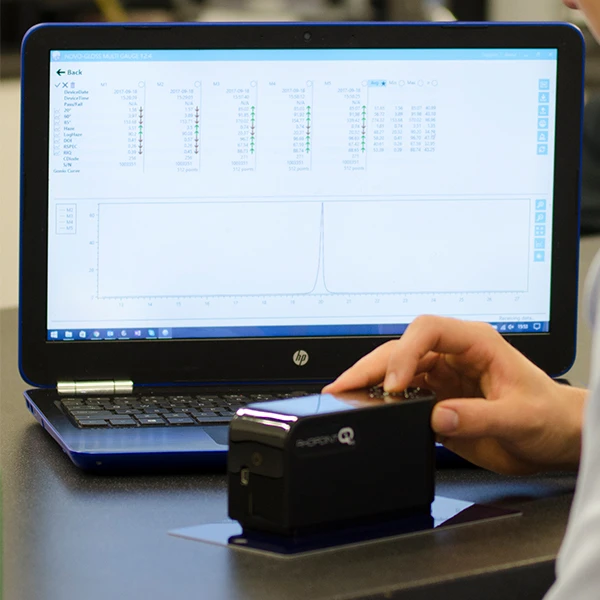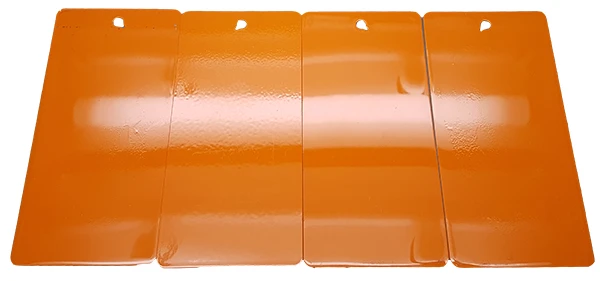Why Does My Coating Surface Looks Like Orange Peel?

The term ‘orange peel’ effect is an orange skin like effect that appears on a surface after a coating process. When we look at an orange peel surface we can see uneven structure of coating visibly and reflected images are wavy and distorted.
Orange peel is caused by incorrect coating techniques, improper setup of spray painting equipment (incorrect nozzle or air pressure), thinner or hardener evaporate too quickly, or too little or excessive use of paint or coating.
Automotive makers, paint & coating applicators and sanitary-ware chromed parts manufacturers check their finished products for orange peel effect.
Orange peel can be measured and quantified by using parameters like Distinctiveness of Image (DOI) or Reflected Image Quality (RIQ). These parameters are measured through quantifying the way light is reflected around the specular angle.
Examples of orange peel:

| 20° | 87.5 | 85.6 | 84.0 | 66.3 |
| 60° | 90.9 | 95.2 | 91.3 | 88.3 |
| 85° | 96.3 | 97.3 | 96.9 | 94.0 |
| HAZE | 4.3 | 7.8 | 2.9 | 14.2 |
| DOI | 66.3 | 37.4 | 96.7 | 77.5 |
| Rspec | 31.6 | 18.6 | 65.0 | 26.1 |
For more information or demonstration, you can contact Konica Minolta Sensing Singapore at 6563 5533 or click here.
